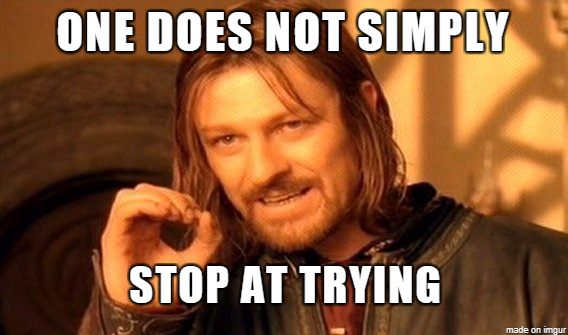This is perhaps one of my longest under-construction articles. I started writing it when I graduated (April 2021) and since then it has undergone 2 title changes, 3 complete re-writes, and countless edits so that it is OK to be published. At one point I was even wondering if I need to publish it at all. But I guess it took me 16 months and countless hours in front of my screen to figure out that this particular article is never going to be OK, and I don’t need to publish it, I want to. So, what is it that I am going to bore you with today? Mental health. A topic that everyone talks about, but only a few care enough to do something about it. Why am I writing about it? Well because I want to talk about:
- The Stigma: We all know someone with mental health issues, but it’s never us. So it’s me opening up about my personal experience of seeking help.
- The Steps: Perhaps the hardest thing is to open up and seek the help that one needs. So I will also be sharing some tips and tricks that helped my case.
- The Shoutout: My mental health took a serious hit during Corona and I needed a lot of help to make it better. So it’s also a shout-out to all the people who helped me.

- The Stigma:
“It’s all in your head, just shake it off!” or ” You are strong, you got this!” is some of the most common response I got when I tried to discuss my not feeling so well, about not having the energy to just sit in front of my laptop and get that work done, or just cook myself something nice, or even just get out of my bed. Most of us find it redonkulous to suggest a person with a broken bone to “sleep on it” or “shake it off”, however, it’s perfectly alright to say this when the most complicated part of our body is having troubles. I initially had a lot of resentment for people giving out this advice, but with my experience, I figured out it’s not their fault. We as a society tend to trivialize and attach a stigma to things that we don’t fully understand. As much as we want to be this 21st-century iHuman, our understanding of the human brain has not kept pace with the change. When we hear “They have mental health issues”, our general tendency is to imagine a crazy maniac on a rampage or a sad person locked up in their room. But according to a recent study by Johns Hopkins University, 1 in 4 Americans has a mental health disorder of some kind [1], a number that could be even higher given how afraid people are of just accepting they are not okay. How afraid? Well, Doctors during the pandemic forwent mental health help for fear of losing their license to practice [2]. This my dear readers is America, we have not even touched Asian societies, where mental health is considered “A rich people thing”. I kid you not, I had the privilege of hearing “Akash, you are becoming too European. Indians Don’t suffer from such things.”, indeed we don’t, Indians just choose to die instead, 17 of them every hour [3] back in 2019, imagine what happened during the pandemic. Now coming to the sad people locked up in their rooms, know about Leonardo DiCaprio, Lady Gaga, Chester Bennington, and Cheslie Kryst, and maybe read up on them. But my personal favorite is the case of a big-time Indian movie star Sushant Singh Rajput [4], a celebrity who committed suicide. A “rich person” who had clinical depression in a country that is soo reluctant in accepting mental health issues, that for months it was all the nation could talk about. Not that, mental health is a real thing, but how he was tricked into believing he had mental health issues. In fact, despite the doctors clearly stating it was a suicide, the case is still under investigation by the FBI equivalent of the Indian investigation agency. Which is still investigating everything from murder to drugs to money laundering, to aliens.
How deep does this stigma go? Well deep enough, many people often believe that going to therapy or even accepting that one has a mental health issue is a sign of weakness. Deep enough that phrases like “Fake it till you make it”, and “Suck it up!” are much more popular amongst the youth than “Ask for help if you need it.”. Deep enough, for people to anonymize their struggle and go into the dark allies of the internet to seek help rather than just asking the people around them. Deep enough that it’s okay to share memes with your so-called friends about mental health, but not okay to just say that you are the person in that meme, the irony of this connected world. What can you do about it? Well, that is what the next section is all about.

- The Steps:
People generally know that they need help, but then don’t know what to do next, or perhaps they are afraid of what comes next. It’s like Newton said, ” An object in a state of uniform motion or rest will continue to do so unless compelled to change its state by the action of an external force.”. Similarly, it’s much easier to be stuck in the loop of self-pity, imagine the worse, and continue with your day-to-day life with a general feeling of gloom and despair than to do something about it.
Let me share a story, What do you do if you want to get some abs or get in shape? Go to the gym perhaps. Sounds easy, maybe for many it is. But for me going to the gym was one of the most difficult things I ever did. For some reason, those gym bros with their massive muscles and ripped bodies have been the stuff of nightmares for me. It is an unfounded fear that I had, but it was fear that prevented me from setting foot in a gym for 25 years (I am a few months over 25 now 😉), till I meet a gym bro and I decided to face my fears. Turns out, those ripped gym bros are real softies and are more than willing to help you get started in the gym. How is this story relevant? Because seeking help for yourself is like hitting the gym. You need to get over that unfounded fear of “Psychologists are for crazy people.” or “I don’t need therapy, I am doing just fine.”. The truth however is that it is easier said than done. So how can we do it?
Step 1: Deny
How, about just denying the whole idea that therapy helps? Call it pseudo-science, useless, risky, impersonal, or something for people who don’t have friends. That is step one.

The benefit of properly doing step one is that if you are a logical person, which I presume you are because you are reading this article, you will find the logical fallacies in your argument. The issue with mental health is that people equate it with a broken brain, which needs to be fixed. So when we don’t see immediate results/relief after visiting the doctor, we assume it’s not working. In reality, it’s more like bodybuilding, you need to keep exercising for a while before you see results. Whether you choose to do it in a gym, hire a personal trainer, or go solo it’s all up to you. In general, it’s recommended to get some expert help before you get started else the exercise might end up doing more harm than good. I hope by now you realize what going to therapy is all about, it’s getting that expert help before you set out on your body(brain)-building journey. I also hope that by now you realize the enormity of the task that lies ahead of you. So let us now go to step 2.
Step 2: Cry
Step two as the heading states is crying, loads of it. You have realized that monumental task that lies ahead of you and now your brain starts giving you all these notions about how futile trying to improve the situation is going to be. It can be many things, my personal favorite is the idea that you are broken beyond repair. Thinking that you are so uniquely fucked that no one can help you. Out of the 8 billion inhabitants of this planet, your problem is the most sophisticated, intense, and mind-boggling shit to ever hit the streets. But, allow me to use a simple meme to explain what you are trying to say:

This phase is perhaps the toughest one to get out of because the same logical mind that helped you get past step one is your biggest roadblock here. How, do you convince it that its ideas and notions about itself could possibly be wrong? Honestly, I don’t know, perhaps you never really do come out of this step, and it’s a constant to and fro between trying and crying. Hey, but at least you are no longer denying it.
Step 3: Try
This step has many forms and supports several multi-billion dollar industries. Here is the thing, technically this should be the step where you go to the expert and ask for help. But it’s our fucking awesome brain, it needs nobody, it’s a strong independent part of the body. Nobody tells it what to do. So, instead of speaking help, we start indulging in things that “make us feel better”, things like retail therapy, sulking at home, binge-watching TV series, and several other not-so-nice things. Trust me, there was a time in my life when I used to watch videos of snake oil sellers on youtube telling people how they overcame every problem in their life by waking up at 5:30 AM and taking cold showers. I have tried this technique, it helped me forget about all my other problems by making me fall sick, giving me ” a real problem” instead of an “imaginary one”.
So the question still remains how to try? For me, it was booked. I read a lot. From Elon Musk and Steve Jobs’s biography to books on Rational Emotional Behaviour Therapy and Beyond. All the reading made me realize that most people have a lot of issues. Both the legendary tech figures of our time have a laundry list of mental health issues. However, because they became “successful” we tend to idolize those traits in them. If say you and I, had the same issues, we would just be called stupid, narcissistic, autistic, lazy, lame, etc, etc. Which again brings out the stigmas and dual standards of our society.
This realization made me understand that it’s OK to not be OK. But it’s not OK to stop trying. So I picked up my phone and called the psychologist and tried to get help. But alas, meant people had decided to do the exact same thing at the same time and I needed to wait 7 weeks before I could see one. So, I kept reading and trying other things out till I could meet my shrink ;). A 63 old guy with a no-nonsense approach to therapy. What happened there is a story on its own. But let me put it this way, there was no couch where I was lying down and trying to find childhood trauma. Instead, a guy who was helping me identify and label my thoughts and then drilling down techniques to manage them. Kind of like a gym instructor pushing you on your leg day, making sure that when he is gone you continue pushing yourself, and continue trying.

- The Shoutout:
Another thing that I have noticed is that in our generation the world has become a bit too glittery or maybe it always was and we now have the means to see it. People are too afraid to be vulnerable and on the surface, everything seems awesome. We are soo used to instant connection, Instagram, and instant gratification, that we forget that good things take time and all that glitters is not gold. That is where this section of this article comes in, the shoutout to all the awesome people in my story. People who gave me their time so that I could figure things out. People who were not afraid to share their stories, so I can feel better. People just listened without judging or offering solutions. People who I can count on. Initially, I did think about listing these awesome people, but I then realized they know who they are. At least my special people always know how special and awesome they are, and I make it a point to tell them all about it. So they don’t need to be listed here, but if you have such awesome people in your life make sure you tell them about their awesomeness.


